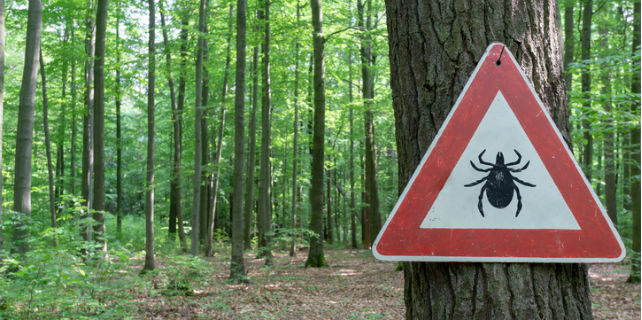


Few species of pest earn more disdain than ticks, small blood-feeding parasites that are responsible for painful, irritating bites, as well as a wide range of diseases – some of which cause permanent health issues. Mention ticks to even the most seasoned outdoorsman, and they’ll tell you that an encounter with one of these insects is nothing to take lightly.
To protect yourself, your family, and your pets from ticks and the diseases they spread, it’s essential to understand these pests and why they are dangerous. It’s also crucial to realize that eradicating ticks is a good idea anytime they are found close to humans. Such a job means contacting a professional, who can discuss the proper option for dealing with the parasites.
The first thing that comes to most people’s minds when they hear the word “tick” is a condition known as Lyme disease. This debilitating and recurring illness, however, is just one of many diseases that can be transmitted by an infected tick. Other conditions include Q Fever, Typhus, and meningoencephalitis, as well as bacterial and protozoan infections.
In the United States, there has also been an explosion of a unique species called The Lone Star Tick. One bite from this sneaky arachnid can render a person severely allergic to red meat of all kinds. Unfortunately, this species is not the only one that has seen a dramatic uptick in range and population in recent years.
Scientists have recently warned that New Jersey, as well as other heavily-wooded North-eastern states, are likely going to see an increase in tick populations in the coming years.
As the environment becomes wetter and hotter due to climate change, it creates the perfect, ultra-humid habit for various types of ticks to thrive, reproduce, and expand their territories.
The most common types of ticks in New Jersey include the following:
Also known as the “black-legged tick,” the deer tick is one of the most common species in the Northeastern US. It gets its name because it primarily feeds off the blood of white-tailed deer, though it can and will attach to humans whenever possible.
Deer ticks live for two years and are incredibly hearty and durable. They are the primary transmitters of Lyme disease in North America.
These exotic ticks came to us from Asia and first established themselves in New Jersey in 2017. Since then, they have become an invasive and dangerous guest in our woods.
With exotic animals come exotic diseases, including theileriosis, which is transmitted to cattle and can be extremely deadly to calves. They also put humans at risk of conditions like Russian Spring-Summer Encephalitis and Spotted Fever.
The aforementioned Lonestar Tick and the unique condition it transmits has been quite popular in the news cycles lately, and for a good reason.
The tick, which was previously confined primarily to the southern states, has made its way up north in recent years, establishing new habitats and infecting more people every year.
The American Dog Tick is one of the most prevalent ticks in the country and has a wide range of preferred hosts, including humans and pets.
Aside from transmitting a large number of bacteria and diseases, these ticks can also cause “tick paralysis,” a weakness of the limbs caused by a neurotoxin present in the tick’s system.
Hard ticks like the ones listed above seek out food by hiding on grass, leaves, or other vegetation and grabbing hosts that pass by. As they are small, they are nearly impossible to see, and their bites can be subtle at first.
Though ticks are often quite solitary, it is possible for a human or animal to pick up many ticks in just a short time in their habitat.
Ticks usually prefer humidity and moisture, living in deeper woods and forests. However, they can also find suitable habitats on properties with shrubs, weeds, and tall grasses. Unfortunately, the closer the tick is to a home, the more likely their next host will be a pet or family member.
As we mentioned, ticks are small and quite hard to see. Also, you don’t want to wait until after a bite to take action. In most cases, it’s best to take a proactive approach. Have a professional evaluate your home for potential tick habitats, and then attempt to establish whether or not there are ticks present.
No matter where you live, it’s possible to be susceptible to tick bites and, consequently, disease. When going into the woods, wear proper clothing and tick repellent whenever possible, and always check yourself, your family, and your pets for bites.
If you spot ticks in and around your home, be sure to contact PermaKill Exterminating for a free quote today!